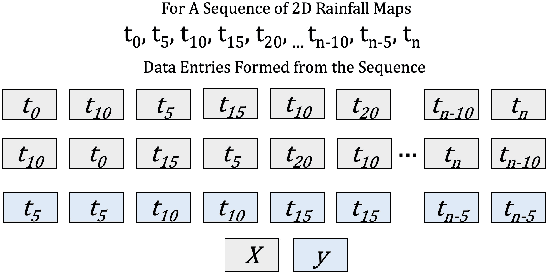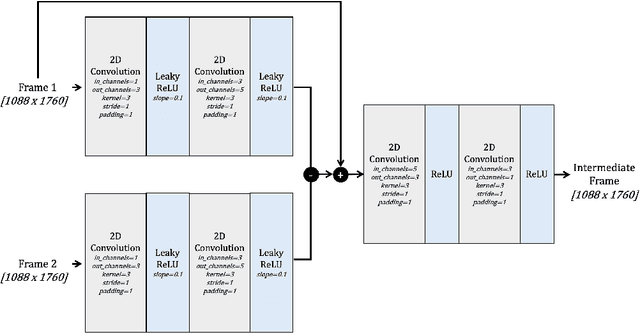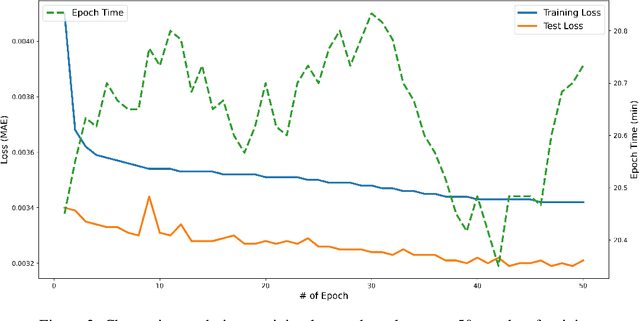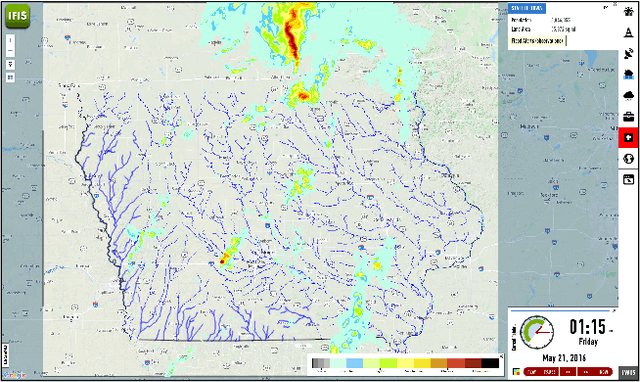Bong-Chul Seo
CNN-based Temporal Super Resolution of Radar Rainfall Products
Sep 20, 2021



Abstract:The temporal and spatial resolution of rainfall data is crucial for climate change modeling studies in which its variability in space and time is considered as a primary factor. Rainfall products from different remote sensing instruments (e.g., radar or satellite) provide different space-time resolutions because of the differences in their sensing capabilities. We developed an approach that augments rainfall data with increased time resolutions to complement relatively lower resolution products. This study proposes a neural network architecture based on Convolutional Neural Networks (CNNs) to improve temporal resolution of radar-based rainfall products and compares the proposed model with an optical flow-based interpolation method.
IowaRain: A Statewide Rain Event Dataset Based on Weather Radars and Quantitative Precipitation Estimation
Jul 07, 2021



Abstract:Effective environmental planning and management to address climate change could be achieved through extensive environmental modeling with machine learning and conventional physical models. In order to develop and improve these models, practitioners and researchers need comprehensive benchmark datasets that are prepared and processed with environmental expertise that they can rely on. This study presents an extensive dataset of rainfall events for the state of Iowa (2016-2019) acquired from the National Weather Service Next Generation Weather Radar (NEXRAD) system and processed by a quantitative precipitation estimation system. The dataset presented in this study could be used for better disaster monitoring, response and recovery by paving the way for both predictive and prescriptive modeling.
 Add to Chrome
Add to Chrome Add to Firefox
Add to Firefox Add to Edge
Add to Edge